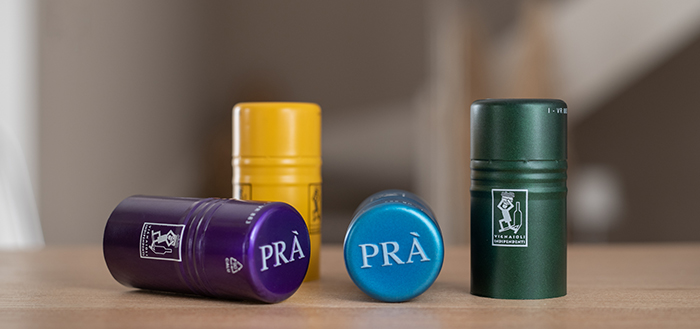
Svitati: the group of Italian producers who go all out for screw caps
The future is screw caps
As long as we continue to see the screw cap as a threat or a problem, we won’t look at it and appreciate it for what it really is: the future. Sommeliers, romantics and cork nostalgics be damned. The magic, the appeal that is created in those few seconds when the wine is opened will not be lost, it will remain even with the screw cap, because different coatings are being developed – different types of cork also developed by Guala Closures – that allow the wine to breathe and evolve, exactly as happens with cork, with the difference that with the screw cap there is no risk of TCA (Trichloroanisole, the substance responsible for the well-known cork odour). This is a criticism that cork suppliers have been trying to counter for some time by offering safer, certified alternatives. Let’s face it: wine, if it isn’t well made, isn’t well made, apart from the cork; today, a winery has a choice of around thirty corks and the screw cap is one of them. It is we, the consumers, and before them the wine merchants and restaurateurs, who are making this a problem. Worldwide, 6 out of 10 bottles are fitted with screw caps, and their cost is not always cheap. On the contrary. It is precisely because the advantage of such a closure is the time it takes for the wines put on the market a few years after the harvest to take on a different value – they have to! – a different value.

The advantages of the screw cap
And if the trend in alcohol consumption is set to contract, even if I prefer to say diversify, the screw cap provides an additional guarantee. If I open it, the bottle will at most have to wait a few moments in the glass for the oxygen barrier effect to wear off. This is known as reductive ageing, and is due to the formation of a greater quantity of volatile sulphur compounds such as thiols (responsible for the formation of aromas attributable to certain types of red and white wine). The screw cap retains those related to the reducing effect after bottling, while protecting the varietal aromas. So, rather than continuing the ‘screw cap yes or screw cap no’ controversy, it’s worth asking which grape varieties are best to focus on. The ‘Gli Svitati’ group of producers, made up of Franz Haas, Graziano Prà, Jermann, Pojer e Sandri and Walter Massa, promoted for the second year running their choice to switch almost entirely to screwcaps by telling their story through a comparative tasting of wines from the same vintage and batch closed with cork and screwcaps. The tasting provided a clearer, more legible picture of the grapes before the switch to screwcaps.
Barolo closed with a screw cap: Sergio Germano’s experiments
But not in all cases, with the Soave du Pra the greatest expressiveness was felt with the version closed with Diam 5.
On Monday 4 March, the Ettore Germano winery was invited to the Casa Agnelli showroom – the showroom for saucepans – for a day of tasting and presentation of the functionality and advantages of using the screw cap. Known for his Hérzu, a pure Riesling, Sergio Germano, who runs the winery, confirmed his thinking: ‘I believe in the screw cap, I’ve been using it for years, since 2006 on whites and for a few years now I’ve been experimenting with it on Barolo, bottling around a hundred bottles a year, to see how it develops. The winery is not part of the Gli Svitati group, but was invited, and yes, the Barolo regulations allow the use of the screw cap, even on the Riserva type. Tasting a 2013 Barolo Cerretta calls into question the vintage and its evolution, the broader, more fibrous tannins and power of the vintage remain, but there’s a tension and energy not always found in a corked version. Finally, the screwcap can also be seen as a tool that turns the tables completely upside down to show us a path that didn’t exist before, which in this case takes us back to the year the wine was released.
